Hasnain Lakhani, Tim McCarthy, Minyoung Kim, David E. Wilkins, and Samuel Wood,
Evaluation of a Delay-Tolerant ICN Architecture. In Proceedings of the seventh International Conference on Ubiquitous and Future Networks (ICUFN 2015), Excellent Paper Award, Sapporo, Japan. July, 2015.
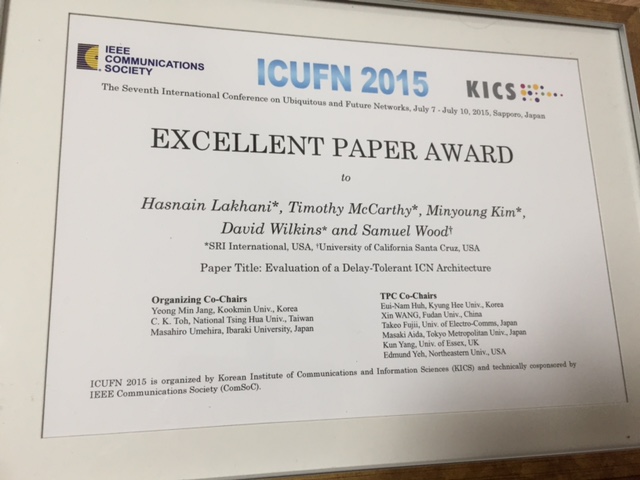
|
Abstract:
Simulation/emulation is key for early testing, assessment, and scalability evaluation of networking solutions for mobile ad-hoc networks (MANETs). If the solution is highly configurable -- such as ENCODERS, SRI's delay-tolerant information-centric networking (ICN) solution -- this type of evaluation is crucial. For effective modeling of information flows, the test framework needs to: (1) allow repeatable execution of scenarios with different patterns of network traffic, operating in different mobility and network-usage contexts, (2) provide a rich simulated environment that can model virtually any network topology and mobility, with high-fidelity device models, and (3) support flexible large-scale simulation, with the option of using virtual machines that execute the same code that would be used on an actual device. We describe our evaluation framework and the results of using it to develop and evaluate ENCODERS.
|
Terry Zimmerman, Laura Barbulescu, Zachary Rubinstein, Stephen Smith and David E. Wilkins,
Distributed Scheduling Agents for Disaster Response. In Proceedings of the ICAPS 2010 Scheduling and Planning Applications woRKshop, Toronto, Canada, pp. 7-14. May 13, 2010.

|
Abstract: We describe the application of a multiagent framework for collaborative scheduling to a disaster-response coordination problem. The problem is a field-exercise mockup of a natural disaster, where a team of human agents must rely on their respective automated scheduling agents to coordinate and accomplish various infrastructure-repair and casualty-transport tasks. We developed a collaborative scheduling framework under the strong assumption that no single agent has a global view of the overall problem. This peer-to-peer approach to multigent scheduling and coordination gives rise to a complex distributed search problem, and effective performance in the field exercise was found to depend heavily on the ability to provide the multiagent system with strong initial strategic guidance. We describe the mechanisms developed for steering the multiagent scheduling system to address specific disaster-response scenarios and report performance results that were obtained in the field exercise.
|

|
Denker, G. and Elenius, D. and Wilkins D. Cognitive Radio Policy Language and Policy Engine. Cognitive Radio Technology, Second Edition, Bruce Fette ed., Elsevier, pp. 557-592, ISBN: 9780123745354, 2009.
|
David E. Wilkins, Stephen F. Smith, Laurence A. Kramer, Thomas J. Lee, Timothy W. Rauenbusch,
Airlift mission monitoring and dynamic rescheduling,
local PDF,
(doi:10.1016/j.engappai.2007.04.001),
Engineering Applications of Artificial Intelligence Journal,
March, 2008, volume 21, number 2, pp. 141-155.
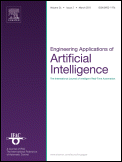
|
Abstract:
We describe the Flight Manager Assistant (FMA), a prototype system, designed to support real-time management of airlift operations at the USAF Air Mobility Command (AMC). In current practice, AMC flight managers are assigned to manage individual air missions. They tend to be overburdened with associated data monitoring and constraint checking, and generally react to detected problems in a local, myopic fashion. Consequently, decisions taken for one mission can often have deleterious effects on others. FMA combines two key capabilities for overcoming these problems: (1) intelligent monitoring of incoming information (for example, weather, airport operations, aircraft status) and recognition of those situations that require corrective action and (2) dynamic rescheduling of missions in response to detected problems, both to understand the global implications of changed circumstances and to determine appropriate rescheduling actions.
|
David E. Wilkins, Grit Denker, Mark-Oliver Stehr, Daniel Elenius, Rukman Senanayake, and Carolyn Talcott,
"Policy-Based Cognitive Radios",
IEEE Wireless Communications, Special Issue on Cognitive Wireless Networks, volume 14, number 4, pp. 41-46, DOI: 10.1109/MWC.2007.4300982, August 2007.
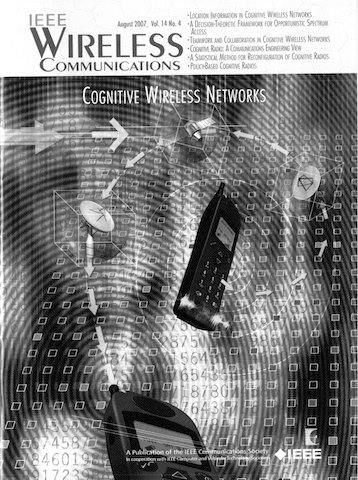
|
Abstract:
We present a new language for expressing policies that allow opportunistic spectrum access while not causing interference. CoRaL has expressive constructs for numerical constraints, supports efficient reasoning, and will be verifiable. The language is extensible so that unanticipated policy types can be encoded. We also describe a Policy Reasoner that reasons about CoRaL policies, and show how this reasoner can be used with various cognitive radios (in this case, an XG radio) to guarantee policy-specified behaviors while allowing spectrum sharing.
|
Grit Denker, Mark-Oliver Stehr, Rukman Senanayake, Daniel Elenius, Carolyn L. Talcott, and
David Wilkins,
"CoRaL - Policy Language and Reasoning Techniques for Spectrum Policies",
8th IEEE International Symposium on Policies for Distributed Systems and Networks (POLICY 2007), Bologna, Italy, 13-15 June 2007.
Abstract:
We present the Cognitive Radio (Policy) Language (CoRaL), a new language for expressing policies that govern the behavior of cognitive radios that opportunistically share spectrum. A Policy Reasoner validates radio transmissions to ensure that they are compliant with the spectrum policies. The Policy Reasoner also discovers spectrum sharing opportunities by deriving what requirements have to be fulfilled for transmissions to be valid, i.e., in compliance with policies. A novel mix of reasoning techniques is required to implement such a reasoner. We will give an overview of our approach and explain how it is related to traditional research in logic programming and automated reasoning.
Grit Denker, Daniel Elenius, Rukman Senanayake, Mark-Oliver Stehr, David Wilkins,
"A Policy Engine For Spectrum Sharing", in New Frontiers in Dynamic Spectrum Access Networks,
2nd IEEE International Symposium on Dynamic Spectrum Access Networks (DySPAN), April 2007, pp. 55-65.
2.5 minute video by Grit Denker.
Abstract:
We argue for a policy-based approach to increase spectrum availability. We summarize a new language for expressing policies that allow opportunistic spectrum access. A Policy Reasoner that reasons about these policies can be used with cognitive radios to guarantee policy-specified behaviors while allowing spectrum sharing. We evaluated the reasoner in a demonstration. We describe the policies used in that demonstration and the results of the evaluation.
David E. Wilkins, Stephen Smith, Larry Kramer, Thomas J. Lee, and Tim Rauenbusch,
"Execution Monitoring and Replanning with Incremental and Collaborative Scheduling",
ICAPS 2005 Workshop on Multiagent Planning and Scheduling, Monterey, CA, 2005.
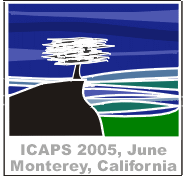
|
Abstract:
We describe the Flight Manager Assistant (FMA), a prototype system, designed to support real-time management of airlift operations at the USAF Air Mobility Command (AMC). In current practice, decisions taken for one mission can often have deleterious effects on others. FMA combines two key capabilities for overcoming these problems: (1) intelligent monitoring of incoming information (for example, weather, airport operations, aircraft status) and recognizing those situations that require corrective action, and (2) dynamic rescheduling of missions in response to detected problems. FMA builds on two of our existing technologies: an execution-monitoring framework previously applied to small-unit operations and control of robots, and a dynamic scheduling tool that is transitioning into operational use in AMC's Tanker/Airlift Control Center.
|
David E. Wilkins and Thomas J. Lee and Pauline Berry,
"Interactive Execution Monitoring of Agent Teams" (PDF),
Journal of Artificial Intelligence Research, volume 18, pages 217-261, March 2003.
JAIR versions of the paper,
HTML version of the paper.
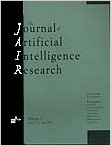
|
Abstract:
There is an increasing need for automated support for humans monitoring the
activity of distributed teams of cooperating agents, both human and machine.
We characterize the domain-independent challenges posed by this problem, and
describe how properties of domains influence the challenges and their solutions.
We will concentrate on dynamic, data-rich domains where humans are ultimately
responsible for team behavior. Thus, the automated aid should interactively
support effective and timely decision making by the human.
We present a domain-independent categorization of the types of alerts a
plan-based monitoring system might issue to a user.
We use this framework to describe an execution monitoring approach we have
used to implement Execution Assistants (EAs) in two different dynamic,
data-rich, real-world domains to assist a human in monitoring team behavior.
One domain (Army small unit operations) has hundreds of mobile,
geographically distributed agents, a combination of humans, robots, and
vehicles. The other domain (teams of unmanned ground and air vehicles) has a
handful of cooperating robots. Both domains involve unpredictable
adversaries in the vicinity. Our approach customizes monitoring behavior for
each specific task, plan, and situation, as well as for user preferences.
Our EAs alert the human controller when reported events threaten plan
execution or physically threaten team members. Alerts were generated in a
timely manner without inundating the user with too many alerts.
|
Vincent, R. and Berry, P. and Agno, A. and Ortiz, C. and Wilkins, D.
Teambotica: a robotic framework for integrated teaming,
tasking, networking, and control,
in Autonomous Agents and Multiagent Systems Conference, 2003.
D. E. Wilkins and M. desJardins,
A Call for Knowledge-based Planning,
AI Magazine, Spring 2001, volume 22, number 1, pages 99-115.
A preliminary version appeared in
the
2nd International NASA Workshop on Planning and Scheduling for Space,
March 16th to 18th 2000, San Francisco, CA, pages 187-192.
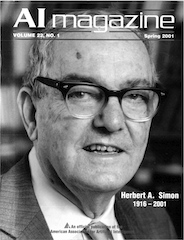
|
Abstract: We are interested in solving real-world
planning problems and, to that end, argue for the use of domain knowledge in
planning. We believe that the field must develop methods capable of using
rich knowledge models in order to make planning tools useful for complex
problems. We discuss the suitability of current planning paradigms for
solving these problems. In particular, we compare knowledge-rich approaches
such as hierarchical task network (HTN) planning to minimal-knowledge methods
such as STRIPS-based planners and disjunctive planners (DPs). We argue that
the former methods have advantages such as scalability, expressiveness,
continuous plan modification during execution, and the ability to interact
with humans. However, these planners also have limitations, such as
requiring complete domain models and failing to model uncertainty, that often
make them inadequate for real-world problems.
In this paper, we define the terms knowledge-based (KB) and
primitive-action (PA) planning, and argue for the use of KB planning
as a paradigm for solving real-world problems. We next summarize some of the
characteristics of real-world problems that we are interested in addressing.
Several current real-world planning applications are described, focusing on
the ways in which knowledge is brought to bear on the planning problem. We
describe some existing KB approaches, and then discuss additional
capabilities, beyond those available in existing systems, that are needed.
Finally, we draw an analogy from the current focus of the planning community
on disjunctive planners to the experiences of the machine learning community
over the past decade.
|
2 papers on SIPE-2 by others:
Marie desJardins and Michael Wolverton.
"Coordinating a distributed planning system." In AI Magazine, 20(4): 45-53, Winter 1999.
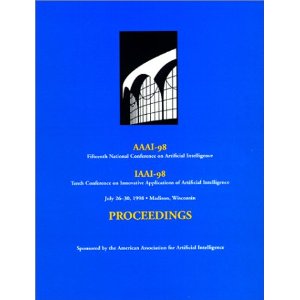
|
Marie desJardins and Michael Wolverton.
"Controlling communication in distributed planning using irrelevance reasoning."
In Proceedings of the Fifteenth National Conference on Artificial Intelligence, Madison, WI, AAAI Press, pp. 868-874, 1998.
|
David E. Wilkins, Karen L. Myers, Marie desJardins, Pauline M. Berry,
Multiagent Planning Architecture, full documentation, 1998,
around 83 pages, intended for those wishing to use MPA and its wrapper functions,
and create agents using MPA message syntax.
David E. Wilkins, Karen L. Myers, Marie desJardins, Pauline M. Berry,
Multiagent Planning Architecture, summary, 1998,
around 36 pages, a subset of the above, without documentation for MPA wrapper functions and
without precise agent interface specifications.
D. E. Wilkins and K. L. Myers,
"A Multiagent Planning Architecture",
Proceedings of AIPS-98, pp. 154--162, June 1998.
Abstract:
The Multiagent Planning Architecture (MPA) is a framework for integrating
diverse technologies into a system capable of solving complex planning
problems. Agents within MPA share well-defined, uniform interface
specifications that facilitate integration of new technologies and
experimentation with different problem-solving strategies. MPA provides a
central repository for storing plan-related information in a shared plan
representation, and metalevel agents that control and customize the interactions
between other agents. The MPA framework has been validated through its use in
developing several large-scale problem-solving systems for Air Campaign
Planning.
D. E. Wilkins,
Using the SIPE-2 Planning System: A Manual for Version 6.1,
(about 230 pages)
SRI International Artificial Intelligence Center, Menlo Park, CA, July 1999.
Abstract:
This document is intended to help new users of SIPE-2 get started. Readers
wishing to program in SIPE-2 should be familiar with the representational ideas
underlying the system which can be found in the book Practical Planning:
Extending the Classical AI Planning Paradigm, by D. E. Wilkins,
Morgan Kaufmann Publishers Inc.,
1988, and in the sections of this document denoted as
advanced concepts. This document should not be treated as a polished or
comprehensive reference. It will not be complete or even correct, as the SIPE-2
system is constantly changing.
K. L. Myers and D. E. Wilkins,
"Reasoning about Locations in Theory and Practice," (PDF),
Computational Intelligence Journal, volume 14(2), pp. 151--187, 1998.

|
Abstract:
Locational reasoning plays an important role in many applications of AI
problem-solving systems, yet has remained a relatively unexplored area of
research. This paper addresses both theoretical and practical issues relevant
to reasoning about locations. We define several theories of location designed
for use in various settings, along with a sound and complete belief revision
calculus for each that maintains a STRIPS-style database of locational facts.
Techniques for the efficient operationalization of the belief revision rules in
planning frameworks are presented. These techniques were developed during
application of the location theories to several large-scale planning tasks
within the SIPE-2 planning framework.
|
Drew Mcdermott, Malik Ghallab, Adele Howe, Craig Knoblock, Ashwin Ram, Manuela Veloso, Daniel Weld, David Wilkins
"PDDL - The Planning Domain Definition Language",
Technical report, CVC TR-98-003/DCS TR-1165, Yale Center for Computational Vision and Control, 1998.
Abstract: This manual describes the syntax of PDDL, the Planning Domain Definition Language, the problem-specification language for the AIPS-98 planning competition. The language has roughly the the expressiveness of Pednault's ADL for propositions, and roughly the expressiveness of UMCP for actions. Our hope is to encourage empirical evaluation of planner performance, and development of standard sets of problems all in comparable notations.
K. L. Myers and D. E. Wilkins,
The Act Formalism, Version 2.2,
SRI International Artificial Intelligence Center, Menlo Park, CA, September 1997.
Abstract: Provides a brief overview of the Act formalism, including a BNF grammar specification of Act.
K. L. Myers and D. E. Wilkins,
The Act-Editor User's Guide: A Manual for Version 2.2 (pdf),
SRI International Artificial Intelligence Center, Menlo Park, CA, September 1997.
Abstract:
The Act Formalism
provides a medium in which to express knowledge about actions for both the SIPE-2 plan generation system and the PRS execution system. This document describes the Act-Editor, which provides a graphical user interface for creating and manipulating Acts. The document is designed for individuals who are already familiar with the Act formalism. The Act-Editor runs on Sun workstations and Windows with Allegro Common Lisp and on Macintoshes with MCL.
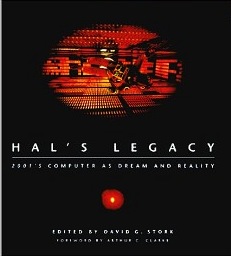
| D. E. Wilkins,
"That's something I cannot allow to happen: HAL and Planning,", by David E. Wilkins
in
HAL's Legacy: 2001's Computer as Dream and Reality,
edited by David G. Stork, foreword by Arthur C. Clarke,
MIT Press, ISBN: 0262193787, paperback: 9780262692113, 1997.
"David E. Wilkins' comments on HAL's bad planning but impressive
improvisation ..... makes for delightful reading"
---- Paul Preuss, San Jose Mercury News Book Reviews, 12 January 1997.
|
P. D. Karp, K. L. Myers, D. E. Wilkins, and J. D. Lowrance
"AIC Software Specifications" ,
SRI International Artificial Intelligence Center, Menlo Park, CA, Version 5.4, April 1997.
Abstract:
This document lays out a set of conventions for managing the major
software systems in use at the Artificial Intelligence Center (AIC), and documents software written to support these conventions. These conventions support loading, compiling, running,
and distributing (to sites outside SRI) the system, using the system as a module in another system, building an image, patching the system, and version control. This document defines a uniform set of Lisp functions, Unix shell commands, and Unix Make operations that should be implemented for every AIC software system.
Thomas J. Lee and David E. Wilkins,
"Using SIPE-2 to integrate planning for military air campaigns,"
IEEE Expert 11(6), December 1996, pp. 11-12.
John Mark Agosta and David E. Wilkins,
"Using SIPE-2 to plan emergency response to marine oil spills," (expanded version)
IEEE Expert 11(6), December 1996, pp. 6-8.
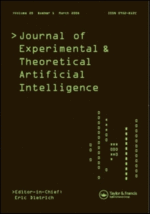
|
D. E. Wilkins, K. L. Myers, J. D. Lowrance, and L. P. Wesley,
"Planning And Reacting In Uncertain And Dynamic Environments" (PDF),
available as a postcript file,
Journal of Experimental and Theoretical AI,
vol. 7, no. 1, pp. 197-227, 1995.
Abstract: Agents situated in dynamic and uncertain
environments require several capabilities for successful operation. Such
agents must monitor the world and respond appropriately to important events.
The agents should be able to accept goals, synthesize complex plans for
achieving those goals, and execute the plans while continuing to be
responsive to changes in the world. As events render some current activities
obsolete, the agents should be able to modify their plans while continuing
activities unaffected by those events. The Cypress system is a
domain-independent framework for defining persistent agents with this full
range of behavior. Cypress has been used for several demanding applications,
including military operations, real-time tracking, and fault diagnosis.
|
D. E. Wilkins and K. L. Myers,
"A common knowledge representation for plan generation and reactive execution" (PDF),
available as a postcript file,
Journal of Logic and Computation, vol. 5, number 6, pp. 731--761, December 1995.
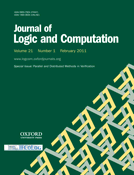
|
Abstract: The ability to integrate sophisticated planning
techniques with reactive execution systems is critical for nontrivial
applications. Merging these two technologies is difficult because the forms
of knowledge and reasoning that they employ differ substantially. The ACT
formalism is a language for representing the knowledge required to support
both the generation of complex plans and reactive execution of those plans in
dynamic environments. A design goal of ACT was its adequacy for practical
applications. ACT has been used as the interlingua in an implemented system
that links a previously implemented planner with a previously implemented
executor. This system has been used in several applications, including robot
control and military operations, thus attesting to its expressive and
computational adequacy.
|
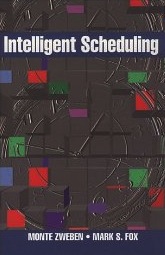
| D. E. Wilkins and R. V. Desimone,
"Applying an AI planner to military operations planning",
in Intelligent Scheduling (M. Fox and M. Zweben, eds.), pp. 685--709,
Morgan Kaufmann Publishers Inc.,
San Francisco, CA, 1994.
Abstract:
This paper describes a prototype system for quickly developing joint military
courses of action. The system, SOCAP (System for Operations Crisis Action
Planning), combines a newly extended version of an AI planning system, SIPE-2
(System for Interactive Planning and Execution), with a color map display and
applies this technology to military operations planning. This paper describes
the Socap problem domain, how SIPE-2 was used to address this problem, and the
strengths and weaknesses of our approach.
|
M. Bienkowski and M. desJardins and R. Desimone.
"SOCAP: system for operations crisis action planning",
Proc. of the ARPA/Rome Lab 1994 Knowledge-Based Planning and Scheduling Initiative Workshop,
pp. 219-228, Morgan Kaufmann Publishing, 1994.
Abstract:
We report on our past and recent experiences in applying an AI generative planning system, called System for Interactive Planning and Execution (SIPE-2), to the problem of generating crisis action operations plans in a joint military domain. We report on the applied research we performed to address the lessons learned. This involved integrating the generative planner with several complementary technologies: a temporal reasoner, a case-based reasoner, and the capacity analysis component of a scheduling system. Section 4 describes temporal reasoning and scheduling in SIPE-2.
http://citeseer.ist.psu.edu/bienkowski94socap.html
D. E. Wilkins,
Using the SIPE-2 Planning System: A Manual for Version 4.9,
SRI International Artificial Intelligence Center, Menlo Park, CA, July 1995.
D. E. Wilkins and K. L. Myers,
"Integrating planning and reactive control,"
in Third International Symposium on Artificial Intelligence,
Robotics, and Automation for Space, (Jet Propulsion Laboratory,
Pasadena, CA), 1994.
D. E. Wilkins, K. L. Myers, and L. P. Wesley,
"Cypress: planning and reacting under uncertainity,"
in ARPA/Rome Laboratory Planning and Scheduling
Initiative Workshop Proceedings (M. H. Burstein, ed.), pp. 111--120,
Morgan Kaufmann Publishers Inc., San Francisco, CA, Feb. 1994.
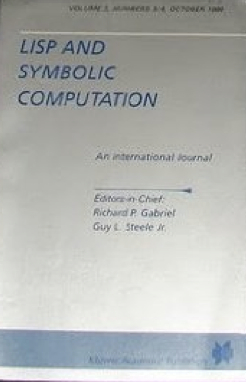
|
P. D. Karp, J. D. Lowrance, T. M. Strat, and D. E. Wilkins,
"The Grasper-CL graph management system,"
LISP and Symbolic Computation, vol. 7, pp. 245--282, 1994.
Abstract: Grasper-CL is a system for manipulating and
displaying graphs, and for building graph-based user interfaces for
application programs. It is implemented in Common Lisp and CLIM, and has been
proven by use in a number of applications. Grasper-CL includes several
advances in graph drawing. It contains a graph abstract datatype plus a
comprehensive and novel language of operations on that datatype. The
appearance of Grasper-CL can be tailored by a wide variety of shape
parameters that allow the application to customize the display of nodes and
edges for different domains. Default values for shape parameters can be
established at several levels. Grasper-CL a toolbox approach to graph layout:
the system contains a suite of graph layout algorithms that can be applied
individually, or in combination to produce hierarchical graph layouts. The
system also contains an interactive graph browser.
|
Roberto Desimone, David E. Wilkins, Marie Bienkowski, and Marie desJardins.
SOCAP: Lessons learned in automating military operations planning.
Proc. of the Sixth International Conference on Industrial and Engineering Applications of AI and Expert Systems, Edinburgh, Scotland, June, 1993.
D. E. Wilkins and M. desJardins,
"Temporal Reasoning in the SIPE-2 Planner", AAAI Spring Symposium, 1993.
J. D. Lowrance and D. E. Wilkins,
"Plan evaluation under uncertainity,"
in Proceedings of the Workshop on
Innovative Approaches to Planning, Scheduling and Control (K. P. Sycara,
ed.), pp. 439--449, Morgan Kaufmann Publishers Inc., San Francisco, CA, Nov. 1990.
D. E. Wilkins,
"Can AI planners solve practical problems?,"
Computational Intelligence, DOI: 10.1111/j.1467-8640.1990.tb00297.x, vol. 6, no. 4, pp. 232--246, 1990.

|
Abstract: While there has been recent interest in research
on planning and reasoning about actions, nearly all research results have
been theoretical. We know of no previous examples of a planning system that
has made a significant impact on a problem of practical importance. One of
the primary goals during the development of the SIPE-2 planning system has
been the balancing of efficiency with expressiveness and flexibility. With a
major new extension, SIPE-2 has begun to address practical problems. This
paper describes this new extension and the new applications of the planner.
One of these applications is the problem of producing products from raw
materials on process lines under production and resource constraints. This is
a problem of commercial importance and SIPE-2's application to it is
described in some detail.
|
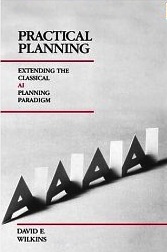
| D. E. Wilkins,
Practical Planning: Extending the Classical AI Planning Paradigm.
Morgan Kaufmann Publishers Inc.,
San Francisco, CA, 1988.
This book helped define hierarchical planning techniques in AI.
|
D. E. Wilkins, "Causal reasoning in planning,"
Computational Intelligence, vol. 4, no. 4, pp. 373--380, 1988.

|
Abstract: Reasoning about actions necessarily involves
tracking the truth of assertions about the world over time. The SIPE planning
system retains the efficiency of the STRIPS assumption for this while
enhancing expressive power by allowing the specification of a causal theory.
Separation of knowledge about causality from knowledge about actions relieves
operators of much of their representational burden and allows them to be
applicable in a wide range of contexts. The implementation of causal theories
is described, together with examples and evaluations of the system's
expressive power and efficiency.
|
D. E. Wilkins, "Hierarchical planning: Definition and implementation,"
in Advances in Artificial Intelligence II (Boulay, Hogg, and Steels,
eds.), pp. 659--671, North-Holland, 1987.
Abstract: There is considerable ambiguity involved in
hierarchical planning. We present a definition of the latter, and examine several of the reasons for this confusion. An explication of hierarchical-planning implementations entails two distinct notions: abstraction level and planning level. A problem in currently implemented planners that is caused by mixing these two levels is presented and various remedies suggested. Three solutions that have been implemented in the current SIPE planning system are described.
D. E. Wilkins, "High-level planning in a mobile robot domain,"
Technical Report 388, SRI International Artificial Intelligence Center, Menlo Park, CA, July
1986.
D. E. Wilkins,
Recovering from execution erors in SIPE,
Computational Intelligence, DOI: 10.1111/j.1467-8640.1985.tb00057.x, vol. 1, no. 1, pp. 33--45, January 1985.

|
Abstract: In real-world domains (e.g., a mobile robot
environment), things do not always proceed as planned, so it is important to
develop better execution-monitoring techniques and replanning capabilities.
This paper describes these capabilities in the SIPE planning system. The
motivation behind SIPE is to place enough limitations on the representation
so that planning can be done efficiently, while retaining sufficient power to
still be useful. This work assumes that new information given to the
execution monitor is in the form of predicates, thus avoiding the difficult
problem of how to generate these predicates from information provided by
sensors. The replanning module presented here takes advantage of the rich
structure of SIPE plans and is intimately connected with the planner, which
can be called as a subroutine. This allows the use of SIPE's capabilities to
determine efficiently how unexpected events affect the plan being executed
and, in many cases, to retain most of the original plan by making changes in
it to avoid problems caused by these unexpected events. SIPE is also capable
of shortening the original plan when serendipitous events occur. A general
set of replanning actions is presented along with a general replanning
capability that has been implemented by using these actions.
|
D. E. Wilkins, Domain-independent planning: Representation and plan generation,
Artificial Intelligence, vol. 22, no. 3, pp. 269--301, April 1984.
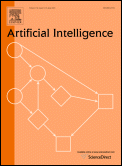
|
Abstract: A domain-independent planning program that
supports both automatic and interactive generation of hierarchical, partially
ordered plans is described. An improved formalism makes extensive use of
constraints and resources to represent domains and actions more powerfully.
The formalism also offers efficient methods for representing properties of
objects that do not change over time, allows specification of the plan
rationale (which includes scoping of conditions and appropriately relating
different levels in the hierarchy), and provides the ability to express
deductive rules for deducing the effects of actions. The implications of
allowing parallel actions in a plan or problem solution are discussed, and
new techniques for efficiently detecting and remedying harmful parallel
interactions are presented. The most important of these techniques, reasoning
about resources, is emphasized and explained. The system supports concurrent
exploration of different branches in the search, making best-first search
easy to implement.
|
D. E. Wilkins, "Using chess knowledge to reduce search,"
in Chess Skill in Man and Machine (P. Frey, ed.), ch. 10, Springer-Verlag, 1983.
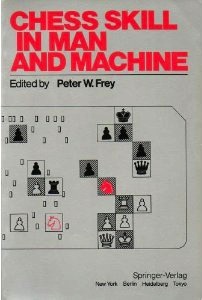
|
Abstract:
The current generation of computer chess programs select a move by exploring
huge lookahead trees (millions of positions). Human masters, on the other
hand, appear to use a knowledge-intensive approach to chess.
They seem to have a huge number of stored patterns, and analyzing a
position involves matching these patterns to suggest plans for attack or
defense. This analysis is verified and possibly corrected by a small search
of the game tree (tens of positions). This chapter describes a program named PARADISE (PAttern
Recognition Applied to DIrecting SEarch) which uses this approach in an
attempt to find the best move in tactically sharp middle-game positions from
the games of chess masters.
PARADISE encodes a large body of chess knowledge, which is used to match patterns in the
chess position and post concepts in the data base. The program uses the
knowledge base to discover plans during static analysis of a position and to
guide a small tree search that confirms that a particular plan is best. The
search is "small" in the sense that the size of the search tree is of the
same order of magnitude as a human master's search tree. Because it grows
small trees, PARADISE can find deeper combinations than most chess programs.
|
D. E. Wilkins, Using knowledge to control tree searching,
Artifical Intelligence, doi:10.1016/0004-3702(82)90009-1, vol. 18, Issue 1, pp. 1--51, January 1982.

|
Abstract:
PARADISE (PAttern Recognition Applied to DIrecting SEarch) uses a knowledge-based analysis and little searching to find the correct move in chess middle game positions. PARADISE's search does not have a depth limit or any other artificial effort limit. This paper describes the methods used to constrain the search. The ideas of using different strategies to show that one move is best and using ranges to express the values of moves (first developed in Berliner's B* search), are extended and clarified. PARADISE combines these ideas with the use of plans, a threshold, and various measures of possibility. Examples are presented, including one in which PARADISE uses an indirect strategy to prove that one move is best without finding the winning line (a first for a chess program).
|
D. E. Wilkins, Using patterns and plans in chess,
Artifical Intelligence, doi:10.1016/0004-3702(80)90039-9, vol. 14, Issue 2, pp. 165--203, Sept, 1980.
also in Readings in Artificial Intelligence (B. Weber and N. Nilsson, eds.), pp. 390--409,
Tioga Publishing, 1981.

|
Abstract
The purpose of this research is to investigate the extent to which knowledge can replace and support search in selecting a chess move and to delineate the issues involved. This has been carried out by constructing a program, PARADISE (PAttern Recognition Applied to DIrecting SEarch), which finds the best move in tactically sharp middle game positions from the games of chess masters. It encodes a large body of knowledge in the form of production rules. The actions of the rules post concepts in the data base while the conditions match patterns in the chess position and data base. The program uses the knowledge base to discover plans during static analysis and to guide a small tree search which confirms that a particular plan is best. The search is "small" in the sense that the size of the search tree is of the same order of magnitude as a human master's search tree (tens and hundreds of nodes, not thousands to hundreds of thousands as in many computer chess programs).
Once a plan is formulated, it guides the tree search for several ply and expensive static analyses (needed to analyze a new position) are done infrequently. PARADISE avoids placing a depth limit on the search (or any other artificial effort limit). By using a global view of the search tree, information gathered during the search, and the analysis provided by the knowledge base, the program produces enough terminations to force convergence of the search. PARADISE has found combinations as deep as 19 ply.
|
D. E. Wilkins, "Causality analysis in chess," in CSCSI Proceedings,
(Victoria, BC), 1980.

|
D. E. Wilkins, "Using plans in chess," in Proceedings of the 1979
International Joint Conference on Artificial Intelligence, (Tokyo,
Japan), pp. 960--967, 1979.
|
D. E. Wilkins, "Using Patterns and Plans to Solve Problems and Control Search," Ph.D. thesis, Computer Science Dept, Stanford University, Stanford, California, AI Lab Memo AIM-329, 1979.
Papers on chess, 1979-1991.
D. E. Wilkins, A non-clausal theorem proving system,
in Proceeedings of 1974 AISB Conference (Society for the Study of Artificial Intelligence and Simulation of Behaviour), Sussex, UK, pp. 257--267, 1974.
Abstract: There are reasons to suspect that non-clausal first-order logic expressions will provide a better base for a theorem prover than conventional clausal form. A complete inference system, QUEST, for the first-order predicate calculus using expressions in prenex form is presented. Comparison of this system with SL-resolution shows that clausal techniques can be transferred to prenex form and expected advantages do seem to appear.
pdf file from Proc. 1974 AISB Conference proceedings.
Papers by P. Hayes, D. Michie, D. Luckham, A. Mackworth, A. Sloman, C. Hewitt, Jay Sussman, Y. Wilks,... from http://homepages.inf.ed.ac.uk/bundy/publications.html

 Wilkins Home Page (additional bibliography entries)
Wilkins Home Page (additional bibliography entries)
David E. Wilkins
Last modified: 2015-07-13 13:55



















